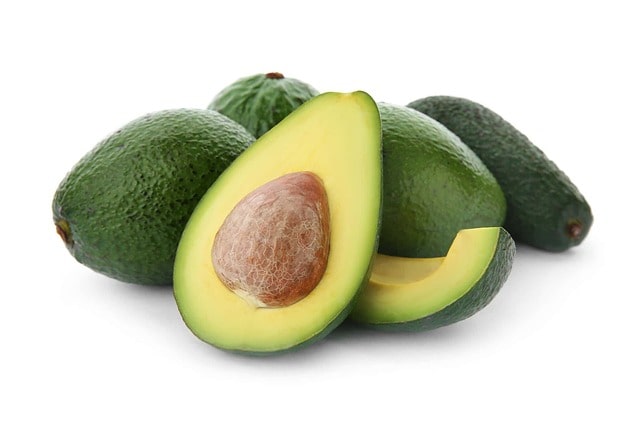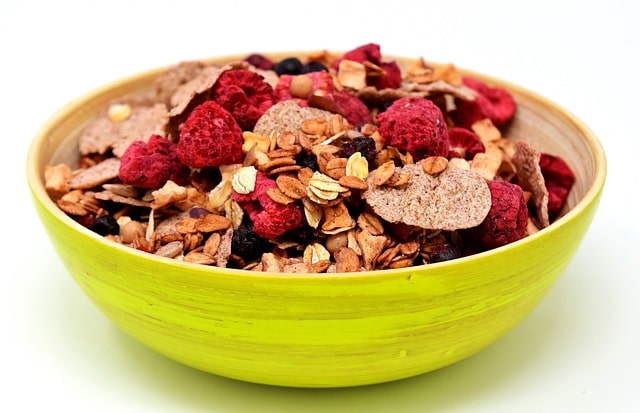
Homemade Mayo with Avocado oil
The Ultimate Guide to Making Homemade Mayo with Avocado Oil: A Healthy and Delicious Alternative
Introduction to homemade mayo with avocado oil
Mayonnaise is a beloved condiment that adds creamy goodness to sandwiches, salads, and a variety of other dishes. While store-bought mayo is convenient, it often contains unhealthy ingredients like artificial preservatives and unhealthy oils. That’s where homemade mayo comes in. By making your own mayo, you have complete control over the ingredients, ensuring a healthier and tastier alternative. In this ultimate guide, I will show you how to make homemade mayo using avocado oil, a nutritious and flavorful option.
Benefits of using avocado oil in homemade mayo
Avocado oil is a fantastic choice for making homemade mayo due to its numerous benefits. First and foremost, avocado oil is rich in heart-healthy monounsaturated fats, which can help reduce bad cholesterol levels and lower the risk of heart disease. Additionally, it contains vitamin E, an essential nutrient that acts as a powerful antioxidant, protecting your cells from damage. Avocado oil also has a high smoke point, making it suitable for high-heat cooking methods. This means that your homemade mayo can withstand higher temperatures without breaking down and losing its nutritional value.
The health benefits of homemade mayo compared to store-bought mayo
When you make your own mayo with avocado oil, you have the advantage of knowing exactly what goes into it. Unlike store-bought mayo, which often contains unhealthy oils like soybean or canola oil, homemade mayo allows you to use high-quality, nutritious ingredients. By using avocado oil, you are incorporating heart-healthy fats into your diet, which can have a positive impact on your overall health. Additionally, homemade mayo doesn’t contain any artificial preservatives or additives, ensuring a cleaner and more natural product.
Step-by-step guide to making homemade mayo with avocado oil
Making homemade mayo with avocado oil may seem intimidating, but it’s actually quite simple. Here’s a step-by-step guide to help you get started:
Step 1: Gather your ingredients To make homemade mayo with avocado oil, you will need the following:
- 1 cup avocado oil
- 1 egg yolk
- 1 tablespoon lemon juice
- 1 teaspoon Dijon mustard
- Salt and pepper to taste
Step 2: Whisk the egg yolk In a medium-sized bowl, whisk the egg yolk until it becomes smooth and creamy.
Step 3: Slowly add the avocado oil While whisking the egg yolk continuously, slowly drizzle in the avocado oil. Make sure to pour it in a thin and steady stream to allow the mixture to emulsify properly.
Step 4: Incorporate the remaining ingredients Once the avocado oil is fully incorporated, add the lemon juice, Dijon mustard, salt, and pepper. Continue whisking until all the ingredients are well combined and the mayo has reached your desired consistency.
Step 5: Taste and adjust Give your homemade mayo a taste and adjust the seasonings as needed. You can add more lemon juice, mustard, or salt and pepper to suit your preferences.
Step 6: Store and refrigerate Transfer your homemade mayo to a clean jar or container with a tight-fitting lid. Refrigerate for at least 30 minutes before using to allow the flavors to meld together.
Tips and tricks for perfecting your homemade mayo
Making homemade mayo can be a bit tricky, but with these tips and tricks, you’ll be able to achieve perfect results every time:
Use room temperature ingredients: Make sure your egg yolk, lemon juice, and Dijon mustard are all at room temperature before starting. This will help with the emulsification process and ensure a smoother mayo.
Whisk continuously and slowly: When adding the avocado oil, whisk continuously and slowly to allow the oil to emulsify properly. Pouring it too quickly can cause the mixture to separate.
Experiment with flavors: Homemade mayo is incredibly versatile, so don’t be afraid to experiment with different flavors. Add minced garlic, fresh herbs, or spices to create unique and delicious variations.
Add a touch of sweetness: If you prefer a slightly sweeter mayo, add a teaspoon of honey or maple syrup to the mixture. This will give your mayo a subtle sweetness without overpowering the other flavors.
Use an immersion blender for foolproof mayo: If whisking by hand proves to be too challenging, you can use an immersion blender for foolproof mayo. Simply place all the ingredients in a tall container, insert the blender, and blend until smooth and creamy.
Variations and flavor additions for your avocado oil mayo
Once you’ve mastered the basic homemade mayo recipe, it’s time to get creative with variations and flavor additions. Here are a few ideas to inspire you:
Chipotle mayo: Add a teaspoon of chipotle powder or adobo sauce for a smoky and spicy kick.
Garlic and herb mayo: Mix in minced garlic, fresh herbs like dill or parsley, and a squeeze of lemon juice for a refreshing and flavorful mayo.
Sriracha mayo: Stir in a tablespoon of sriracha sauce for a mayo with a tangy and spicy twist.
Curry mayo: Add a teaspoon of curry powder and a pinch of turmeric for a mayo with an exotic and aromatic flavor.
Basil pesto mayo: Blend fresh basil leaves, pine nuts, Parmesan cheese, and garlic in a food processor. Stir the pesto into your homemade mayo for a burst of herbaceous goodness.
Storing and preserving homemade mayo with avocado oil
To ensure the longevity of your homemade mayo, it’s essential to store and preserve it correctly. Here are some guidelines to follow:
Refrigerate promptly: Homemade mayo should be refrigerated immediately after making it. This will help prevent the growth of harmful bacteria.
Keep it tightly sealed: Transfer your homemade mayo to a clean jar or container with a tight-fitting lid. This will prevent any air from entering and help maintain freshness.
Use within one week: Homemade mayo typically has a shelf life of about one week in the refrigerator. Be sure to check for any signs of spoilage, such as an off smell or mold, before using it.
Avoid cross-contamination: Always use clean utensils when scooping out your homemade mayo to avoid cross-contamination. This will help prevent any bacteria from entering the jar and prolong its shelf life.
Recipes and ideas for using homemade avocado oil mayo
Now that you have a jar of homemade avocado oil mayo, it’s time to put it to good use. Here are some recipes and ideas to inspire you:
Classic chicken salad: Toss shredded chicken with celery, red onion, and a generous dollop of homemade avocado oil mayo for a classic and satisfying chicken salad.
BLT with a twist: Spread a generous amount of homemade avocado oil mayo on toasted bread, then layer crisp bacon, fresh lettuce, and juicy tomatoes for a delicious twist on the classic BLT.
Creamy coleslaw: Mix shredded cabbage, carrots, and sliced bell peppers with homemade avocado oil mayo for a creamy and flavorful coleslaw.
Baked salmon with mayo crust: Spread a layer of homemade avocado oil mayo on top of salmon fillets, then sprinkle with breadcrumbs and bake until golden and crispy. The mayo crust adds a creamy and flavorful twist to the dish.
Deviled eggs: Mix the egg yolks with homemade avocado oil mayo, Dijon mustard, and a dash of paprika for a creamy and tangy filling. Spoon the mixture back into the egg whites for a crowd-pleasing appetizer.
Frequently asked questions about homemade mayo with avocado oil
- Can I use a different oil for homemade mayo? While avocado oil is highly recommended for its health benefits and flavor, you can experiment with other oils like olive oil or light-tasting oils. Keep in mind that the flavor and texture of the mayo may vary.
- Is homemade mayo safe to eat? Yes, homemade mayo is safe to eat as long as you follow proper food safety guidelines. Refrigerate it promptly, use clean utensils, and discard any mayo that shows signs of spoilage.
- Can I freeze homemade mayo? It is not recommended to freeze homemade mayo, as it can cause the emulsion to break and result in a watery texture when thawed.
- How long does homemade avocado oil mayo last? Homemade avocado oil mayo typically has a shelf life of about one week when stored properly in the refrigerator.
- Can I make vegan mayo with avocado oil? Yes, you can make vegan mayo by substituting the egg yolk with a plant-based alternative like aquafaba or silken tofu. Follow the same steps and enjoy a delicious vegan version of homemade mayo.
Conclusion: Enjoying the health and flavor benefits of homemade mayo with avocado oil
By making your own mayo with avocado oil, you can enjoy a healthier and tastier alternative to store-bought mayo. Avocado oil provides numerous health benefits, and homemade mayo allows you to control the ingredients, ensuring a clean and nutritious condiment. With the step-by-step guide, tips and tricks, and recipe ideas provided in this ultimate guide, you’ll be well-equipped to create your own delicious homemade mayo. So grab your whisk and start enjoying the health and flavor benefits of homemade mayo with avocado oil!
CTA: Now it’s time to put your newfound knowledge to use and start making your own homemade mayo with avocado oil. Get creative with flavors, try out different recipes, and enjoy the health benefits of this delicious condiment. Start your homemade mayo journey today!





